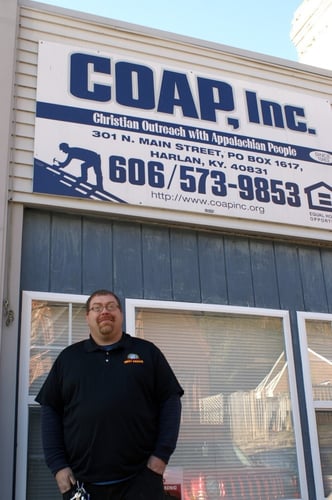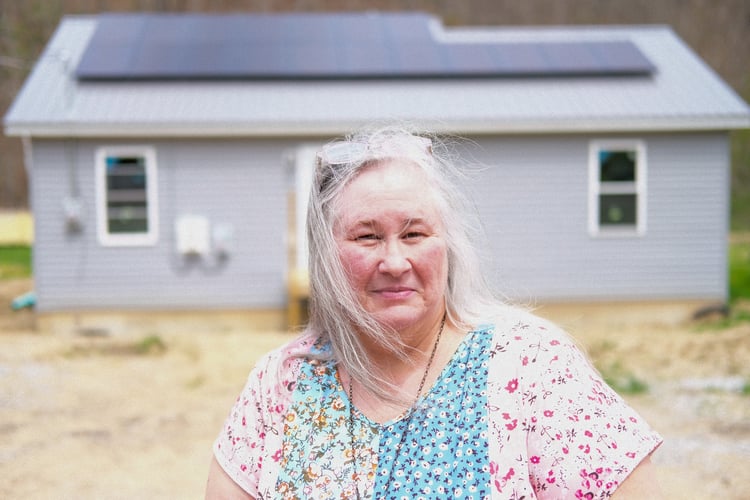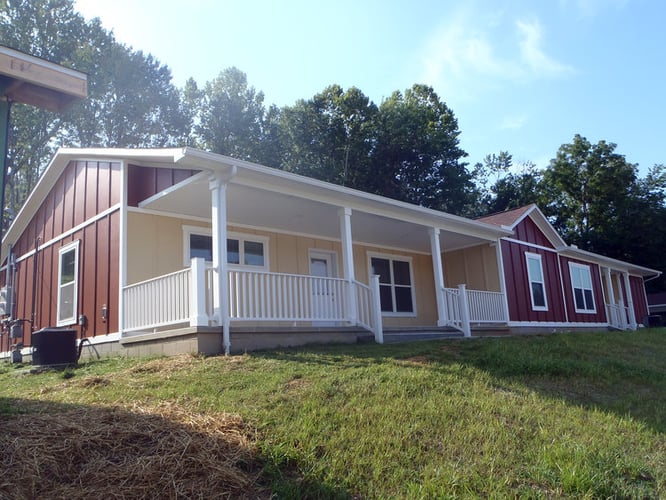From July 26 to 30, 2022, thunderstorms overwhelmed eastern Kentucky, destroying and damaging thousands of homes, and now two nonprofit developers are teaming up to address the housing need.
Housing Development Alliance and HOMES, Inc. Helping to Rebuild After Flooding
From July 26 to 30, 2022, thunderstorms overwhelmed eastern Kentucky in a narrow ribbon stretching from just southeast of Lexington to the West Virginia state line. Day after day, the same areas in the Appalachian region were pounded with unprecedented rainfall. Much of the inhabited landscape there lies in valleys, what are called hollers, the flat, low-lying land next to rivers and creeks on which residents are able to build houses or park mobile homes. The advantage of the terrain is that it's flat and generally within range of utilities and roads. The awful disadvantage comes in the form of floods, which have historically been devastating to this region.
The flooding in late July was no different. In Whitesburg, water reached about 21 feet before the gauge failed by which time the previous record (set in 1957) had already been bested by six feet. In Jackson, 60 miles to the northwest, the North Fork of the Kentucky River overflowed, and floodwaters crested at 43.47 feet, surpassing the 1939 record. The flooding seemed to come from all bodies of water, including creeks, making the damage all the more widespread.
Flash flooding from what are called "training thunderstorms" caused most of the damage. Such weather events drop enormous volume of rainfall over a small area in a matter of hours, causing placid creeks and streams to overflow. During the periodic storming, which lasted five days, the National Weather Service issued 24 flash flood warnings. On the evening of July 27 and early morning of July 28 alone, in a period of hours, 13 flash flood warnings were issued. Upwards of 14-16 inches fell in places such as southern Knott and adjoining Perry counties. Those who have witnessed training thunderstorms describe them either stationary or moving backwards slowly, an illusion caused by the cells inside the system generating so quickly and so closely together that rain appears to be doubling back instead of moving forward.
Nailing down the exact number of homes that were lost or damaged in the July 2022 flooding proves incredibly difficult, but estimates put the number somewhere around 2,100. Of those, 400 simply disappeared, were uprooted and carried away in the rush of water overflowing the rivers and creeks, broken up on other homes, trailers, vehicles, trees. The remainder sustained damage beyond what is possible or financially reasonable to repair. Subfloor and drywall soaked through. Structures pushed off foundations. Trailers flipped. Stories from flood survivors lend a certain physicality to the horror. One resident described the crunching metal-on-metal sounds of waterborne homes crashing into others in the dark. Another described the view from above, saying the floodwaters had come so high, it was impossible to tell what was water and what was not.
Terry is one of the residents who survived the flooding. She lived in Bulan in Perry County in her childhood home, a split-level that she inherited from her parents who passed away in 2000. She remembered that water had gotten into the basement in the 1960s and a few times in the early aughts but had never caused much trouble. In late July 2022, however, 23-inches of water got into the living space, rendering it uninhabitable.
On the night of the flood, Terry went to bed at 10 p.m. and woke at 5 a.m. to a house with standing water. "I started to get out of the bed and when I put my foot down, the floor was wet," she recalled. "At first, I thought maybe the commode had overflowed or something." When she put her other foot down, though, it was clear to her that the house was flooded.
"Everything was on the floor," she said. "Furniture turned over. I walked out to the hallway and there was all kinds of stuff in the hall."
She had slept through the heart of the storm. Her son had tried to call, but the landline was down. He had tried to reach her by car, too, but the roads were flooded and impassable.
That morning, when she walked out to the porch to see how high the water had come, the water closed the locked door behind her. She had to wade around to the back of the house, where the kitchen door was unlocked.
"I'm holding onto the house and the water’s just rushing by me," she recalled. "I finally make it back into the house and after that, I kind of sat there in the kitchen on the stool, looking around, wondering when I was gonna be able to get out of there."
A neighbor showed up, asking if she needed any help. She asked if he could help her find her dog, Pepper, who had disappeared in the night. They found her under the bed, where she had hidden during the storm, wrapped in her favorite blanket. In a matter of hours, Terry had lost her childhood home and her beloved chihuahua.
"I was just in shock and really couldn’t cry or anything," she said. "Didn’t have any feelings. Just like I was suspended."
It would be two months before she was able to cry.
"I’ve tried to maintain a positive attitude," she said, "even though I’ve lost my family home where I was very happy growing up. I had wonderful parents. Wonderful sisters."
In the wake of the storm, Terry weighed her options. She wondered if the house was salvageable. She was unemployed at the time and the house had been free and clear for decades.
"My first inclination was to repair my house," she said.
With the help of her family, she removed the carpet and damaged walls and cleaned up. Scott McReynolds from Housing Development Alliance (HDA) in Hazard came to inspect the damage and survey the property to see if they could salvage the house and/or move the structure out of the floodplain. But it wasn't possible.
"I said, well, I guess I’m just not gonna be able to do it because I cannot face another flood," said Terry.
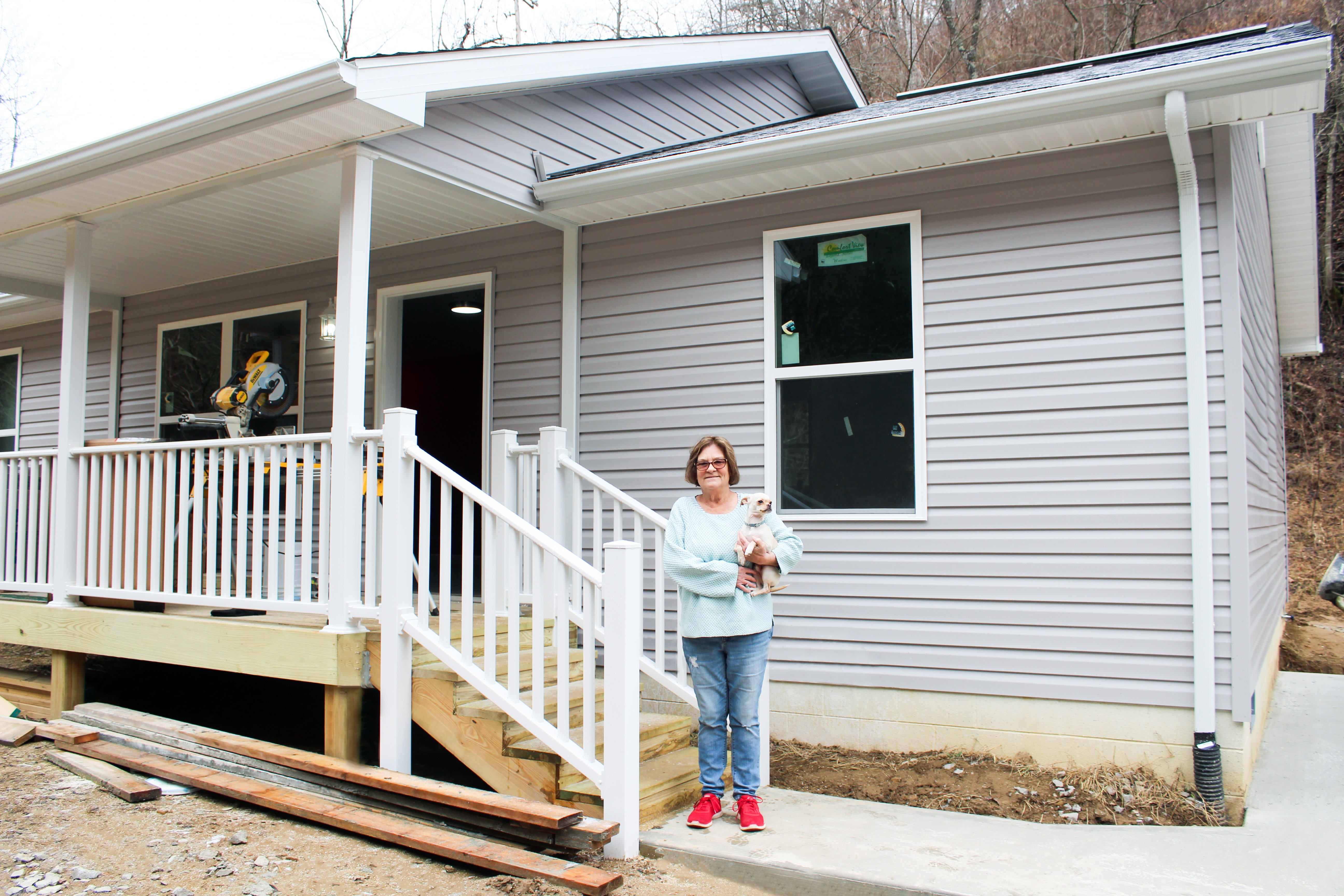
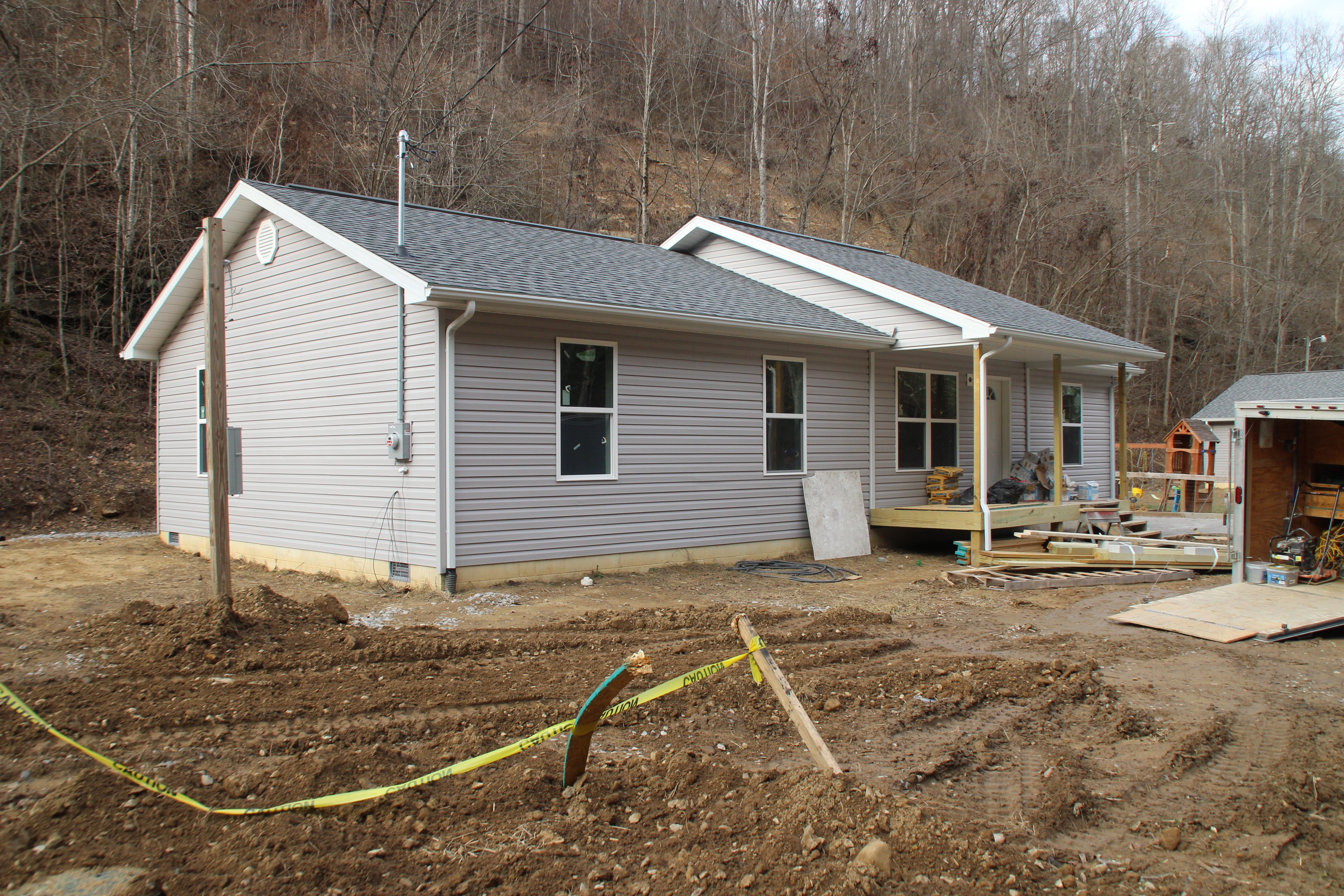
Fortunately for Terry, HDA had an available house for sale about 15 miles away. And thanks to an influx of private donations to HDA after the flooding, Terry could afford it.
"I’ve never had a brand-new house, so that makes me happy," she said.
The closing is set for the spring, and, if everything goes to plan, she will move in immediately after. Everything she was able to save, including a washer, dryer, and stove, is coming along with her.
McReynolds said most of the money they have received since the flood have been private donations. Unlike federal funds, like the Community Development Block Grants (CDGB) from the U.S. Department of Housing and Urban Development (HUD), private funds are not subject to strict rules or paperwork. One benefit is that HDA can start building and renovating houses right away. Among other projects, the money is going toward four homes on Amils Mountain Road. Two structures are up and the other two just recently had the concrete footers poured.
One drawback, said McReynolds, is that it is now entirely up to HDA, not to a preexisting list of requirements from the government, to decide which houses should be repaired, which moved to higher ground, and which built anew someplace else. This isn't an issue of flood plain so much as flood prone because in FEMA-designated flood zones, houses that are 50% damaged cannot be rebuilt there unless flood-proofed, which is costly. In addition, the existing flood plain mapping is woefully outdated. Many lost and damaged homes are not in the flood plain but, given the weather events in the last few years, might flood again regardless. That might weighs heavily on McReynolds and his team. It just doesn't make sense, he said, to put $100,000 into a house that's worth $200,000 but that might flood again. Trying to decide what long-term solution is best for everyone takes up a lot of time and effort. The uncertainty about future funding opportunities further complicates the work.
"It's hard to make long-term plans without money coming in," he said, "without knowing."
Seth Long, executive director of HOMES in nearby Whitesburg, agreed with McReynolds, saying that that without the private and foundation funds and support from organizations like Kentucky Housing Corporation, HOMES simply could not have been and continue to be effective.
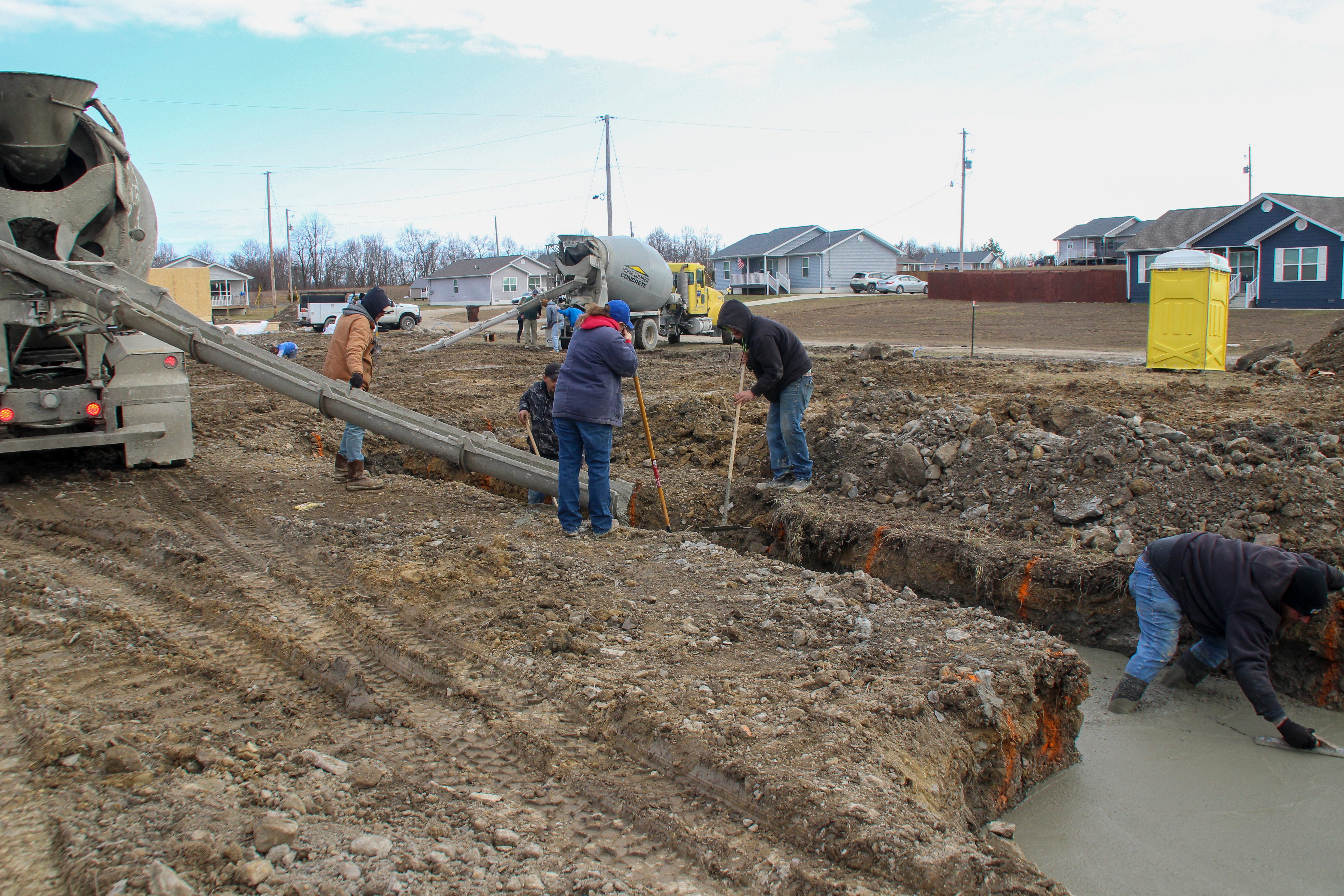
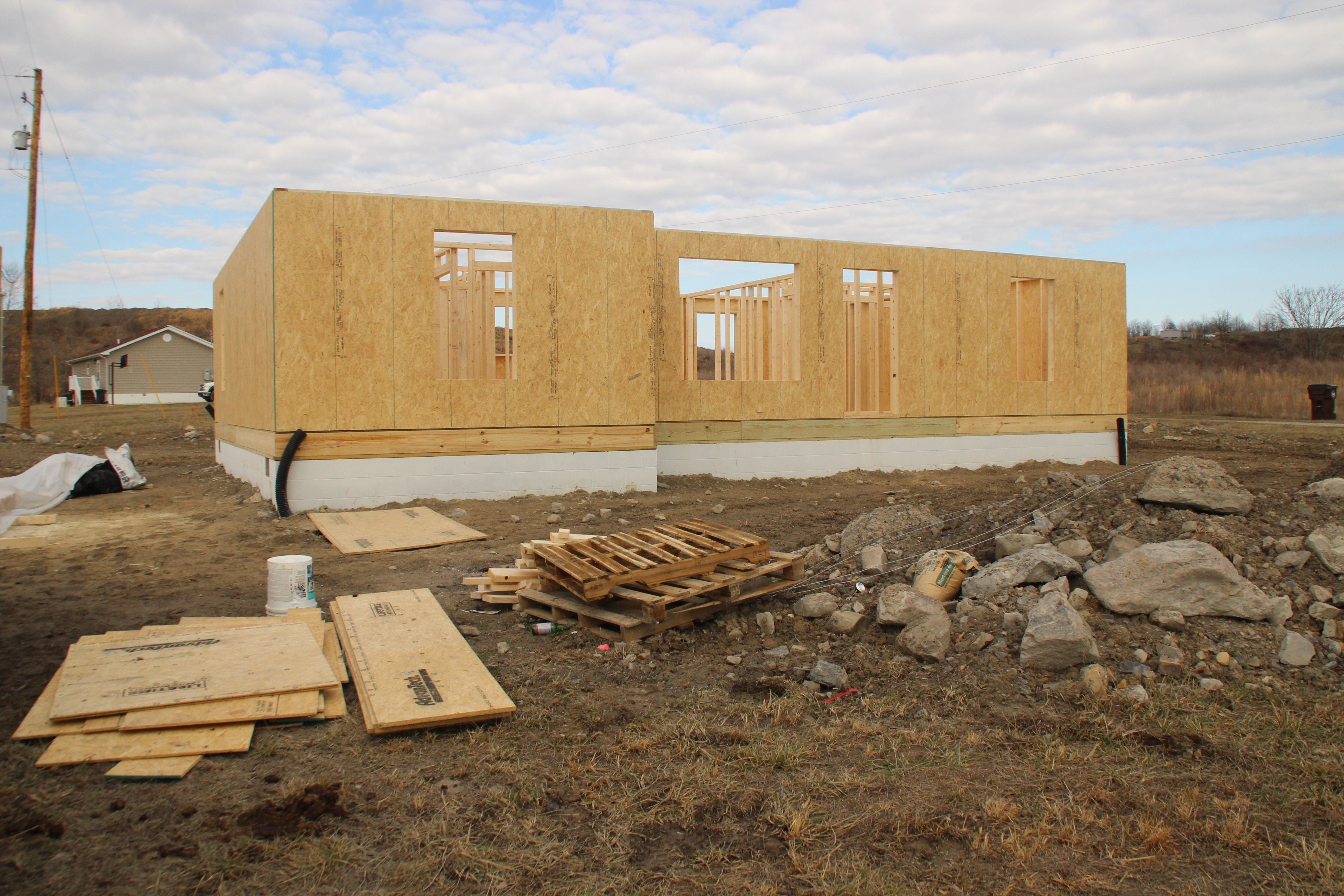
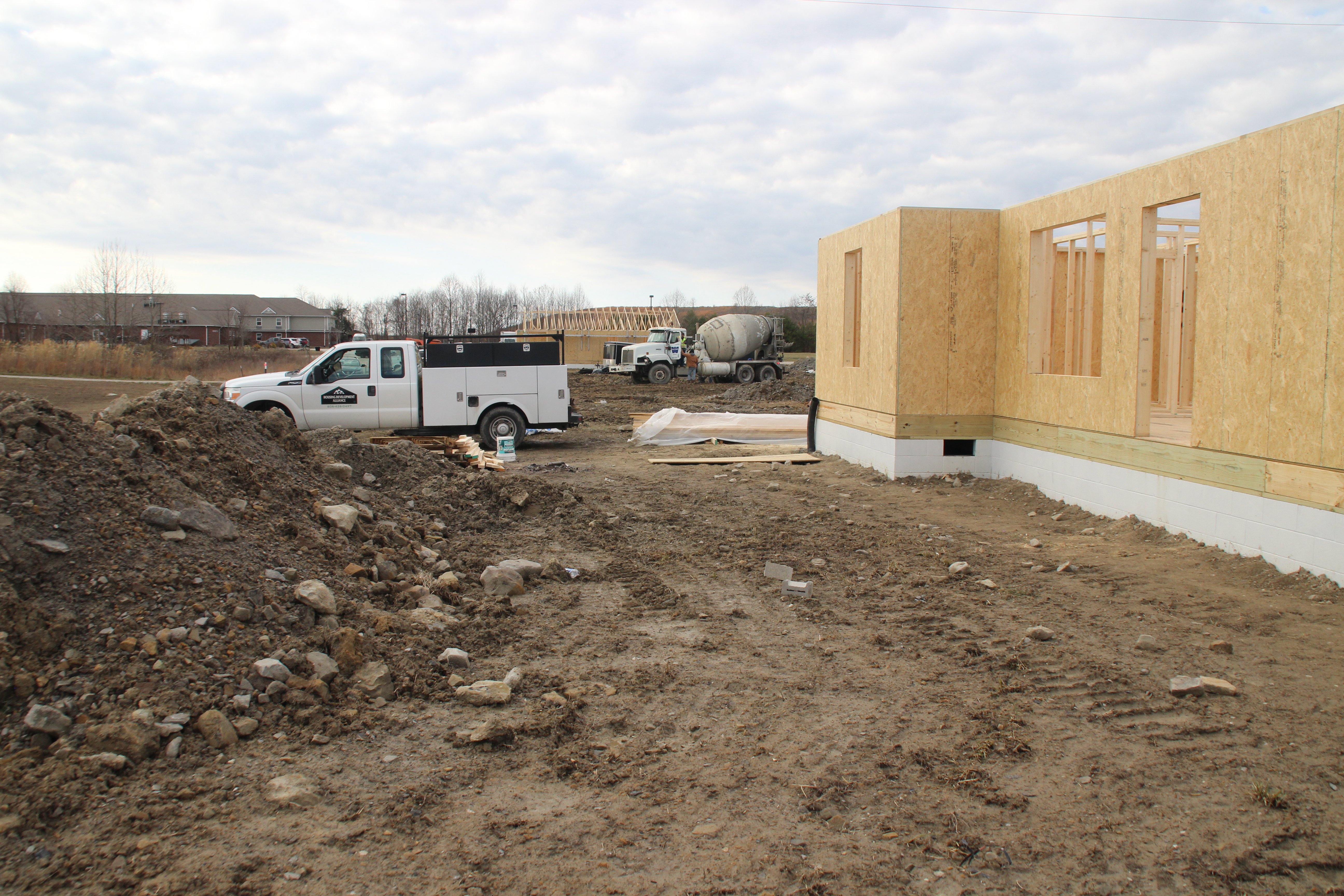
The sheer volume of need is overwhelming. According to FEMA, 16,033 households (or 34,374 people) applied for aid, which is 14.5% of households in the impacted area. In the four hardest hit counties (Breathitt, Knott, Letcher, and Perry), 10,112 households (or 22,847 people) applied for aid, which is 31.1% of the households. Both HDA and HOMES are hiring new staff in order to increase production. In a typical year, HDA builds 21 houses and rehabs an additional 50 or 60. This year, McReynolds has plans to double those numbers. Long would like to follow suit.
"If we have the dollars to work with, and we have the capacity to do it," he said, "we could probably double or triple our production rates, maybe even quadruple them."
HOMES currently has seven houses under construction. It also has seven additional lots that have all the site work completed: water, sewer, septic, driveway, etc.
Suffice it to say, a lot of capital is needed. According to the Foundation for Appalachian Kentucky, 1,750 families self-reported their homes as a total loss.
"At just $25,000 per site," said McReynolds, "1,750 new house sites will cost $43,750,000. This number does not include homes that were substantially damaged rather than destroyed but still need to be relocated to prevent future flooding."
That number includes only the site, not the materials or labor for the house.
In August 2022, HDA, HOMES, and others, including representatives from the Foundation for Appalachian Kentucky, met to discuss what they could to immediately in the aftermath of the flooding. Because of the pre-existing housing crisis and because the high rate of social vulnerability in eastern Kentucky, the group knew that there was a significant number of households needing deep assistance to recover. The result of the meeting is an initiative called Housing Can't Wait, which was funded with $1.23 million from the Foundation and another $50,000 from FAHE. The plan is for HDA and HOMES to build four houses in each of the hardest hit counties: Perry, Breathitt, Letcher, and Knott. HDA is currently working on 10 houses and HOMES has already finished one, which was purchased by an elderly couple who were well into retirement, their house long ago paid off, before the flood.
"They were in a good spot," said Long. "The house is paid for, they are enjoying their retirement, and then they lose everything they had."
Long added that the prospect of taking on a 30-year mortgage for families like these "is just daunting to consider." McReynolds agreed.
"I know a couple of elderly couples who had as part of their retirement plan a paid-for house and now it's gone." Others had to borrow $50,000 to $60,000 to fix their houses. But many just don't have the money.
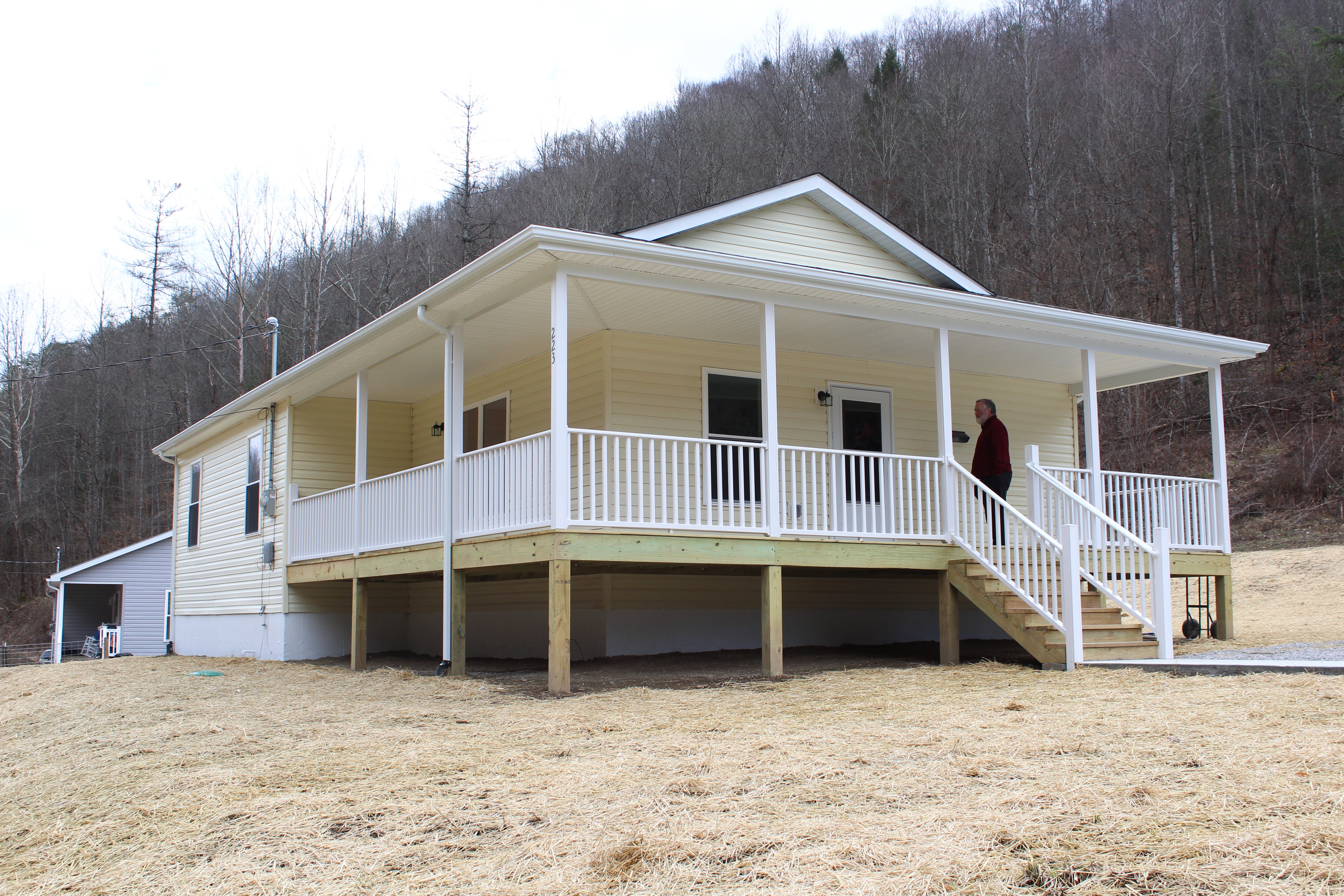
HDA and HOMES aren't working on the problem alone. Team Eastern Kentucky Flood Relief Fund recently committed $600,000 to build eight new homes in partnership with the HDA and HOMES. In addition, the governor has announced two of several development projects in eastern Kentucky. The first, called Olive Branch, is a community in Talcum in Knott County that will include small, medium, and large home lots, senior apartments, recreation space, an elementary school, and a wooded area. The second, located five miles outside of Hazard, will include 150 houses on a 50-acre site. Still, because of the lengthy environmental and geotechnical tests, planning, and construction process, these communities are a few years from being realized.
"The pressure that I feel," said Long, "is what do we do for the next three years before those are available because housing can’t wait, people need houses now. That’s where the real rub for me is, the tension is for me, as a provider of housing in Letcher County."
The challenges include rental housing, too. Eighteen of the 54 rental properties owned by HOMES were flooded to some degree, so Long is adding more rental properties to its portfolio.
"Housing, all levels of housing, are needed," Long said. "We need new homes, we need renovations, and we need rentals."
McReynolds agreed. Because approximately 30% of the flood-affected households were rentals, HDA has plans to develop large and small rental projects in flood-impacted communities. It is particularly important that HDA and HOMES, the two nonprofit developers in eastern Kentucky, build rentals because the affordable housing developers aren't building in the region. To recoup their investment, they would have to charge more than the residents could afford. The two initiatives from TEAM Kentucky will bring developers to the region, but that is still a few years away.
In the news cycle, said Long, this has become old news. But for him and for everyone who lives in the region, it's ongoing news. It has become the new normal. The flood has reshaped the county, he said, and the conversations around housing.
"When you’re here on the front lines trying to provide assistance, you’re meeting people—elderly people or young people, families—living in camper trailers, not knowing what they’re going to do next. There’s still a lot that’s needed and there’s a lot of work to do."
Article by Steve Morrow
Photos by Steve Morrow and Mindy Miller
